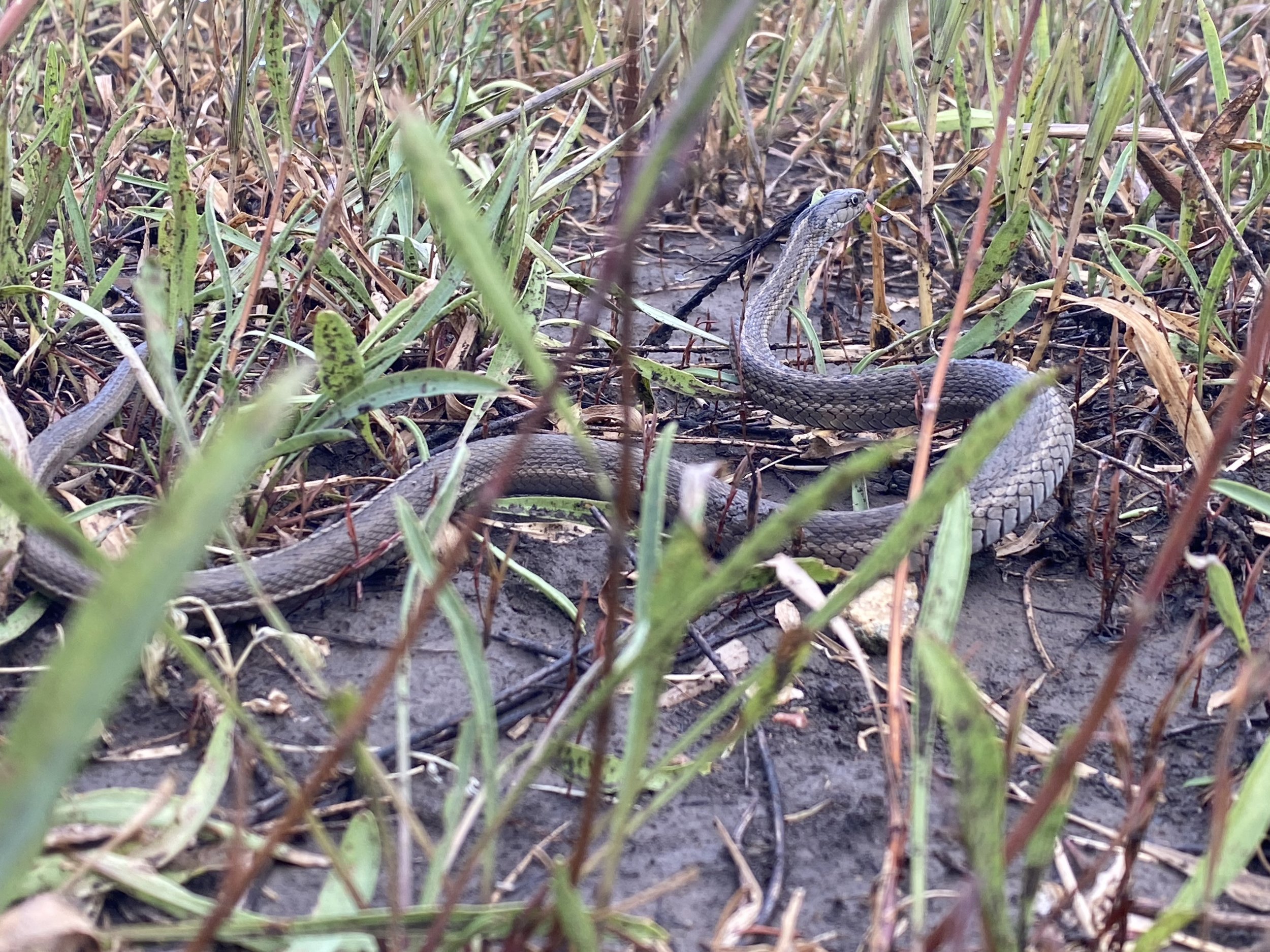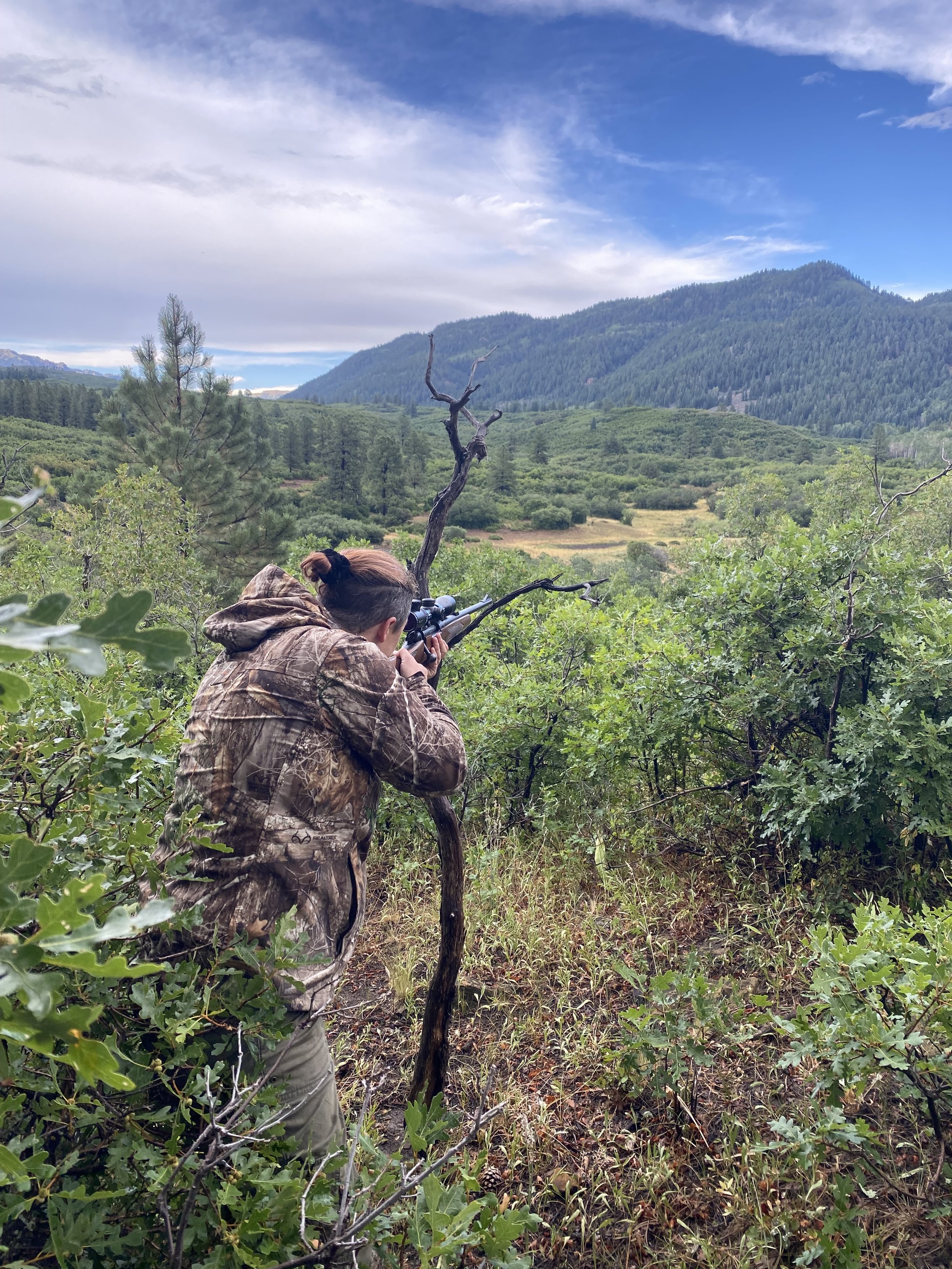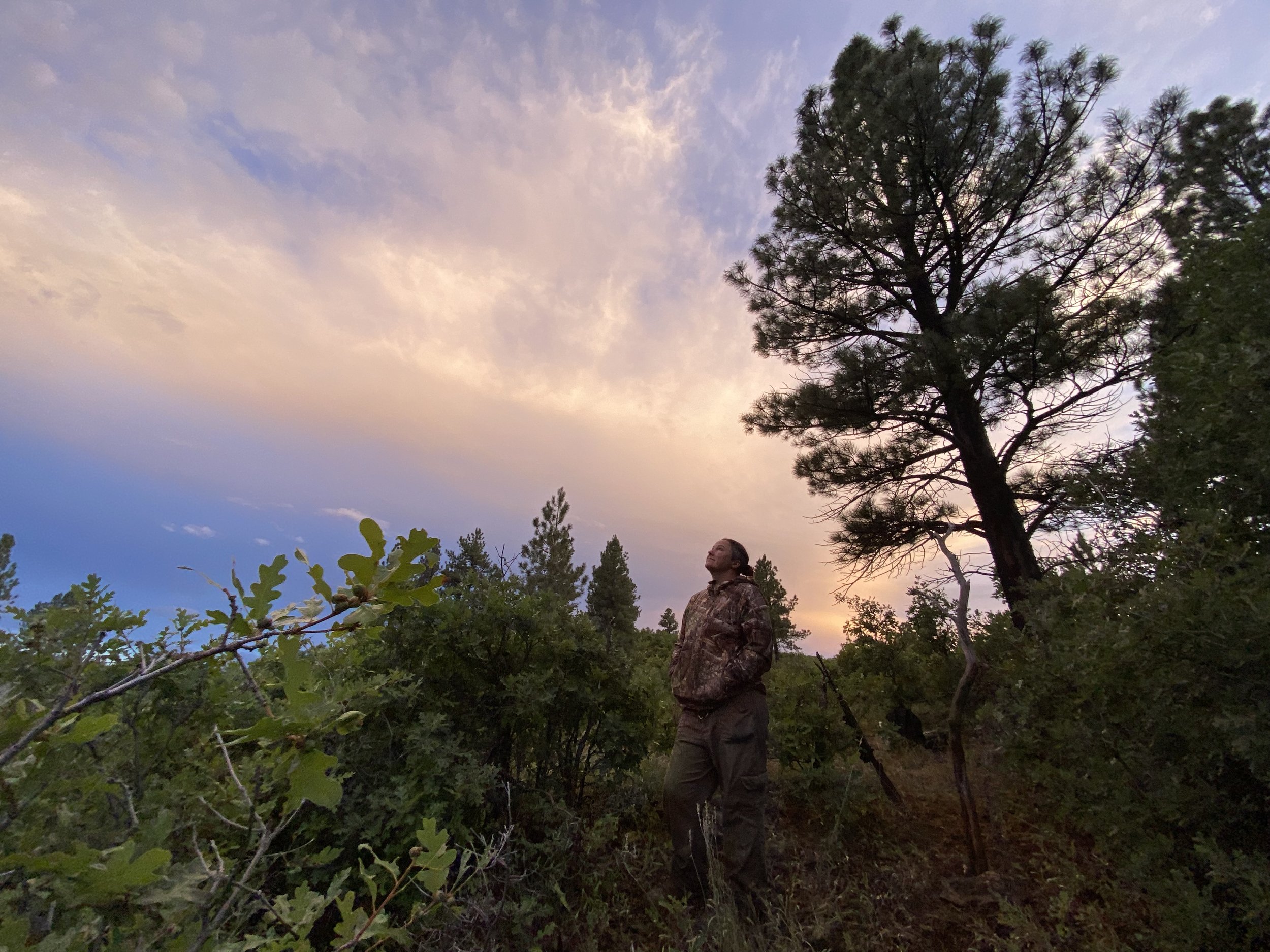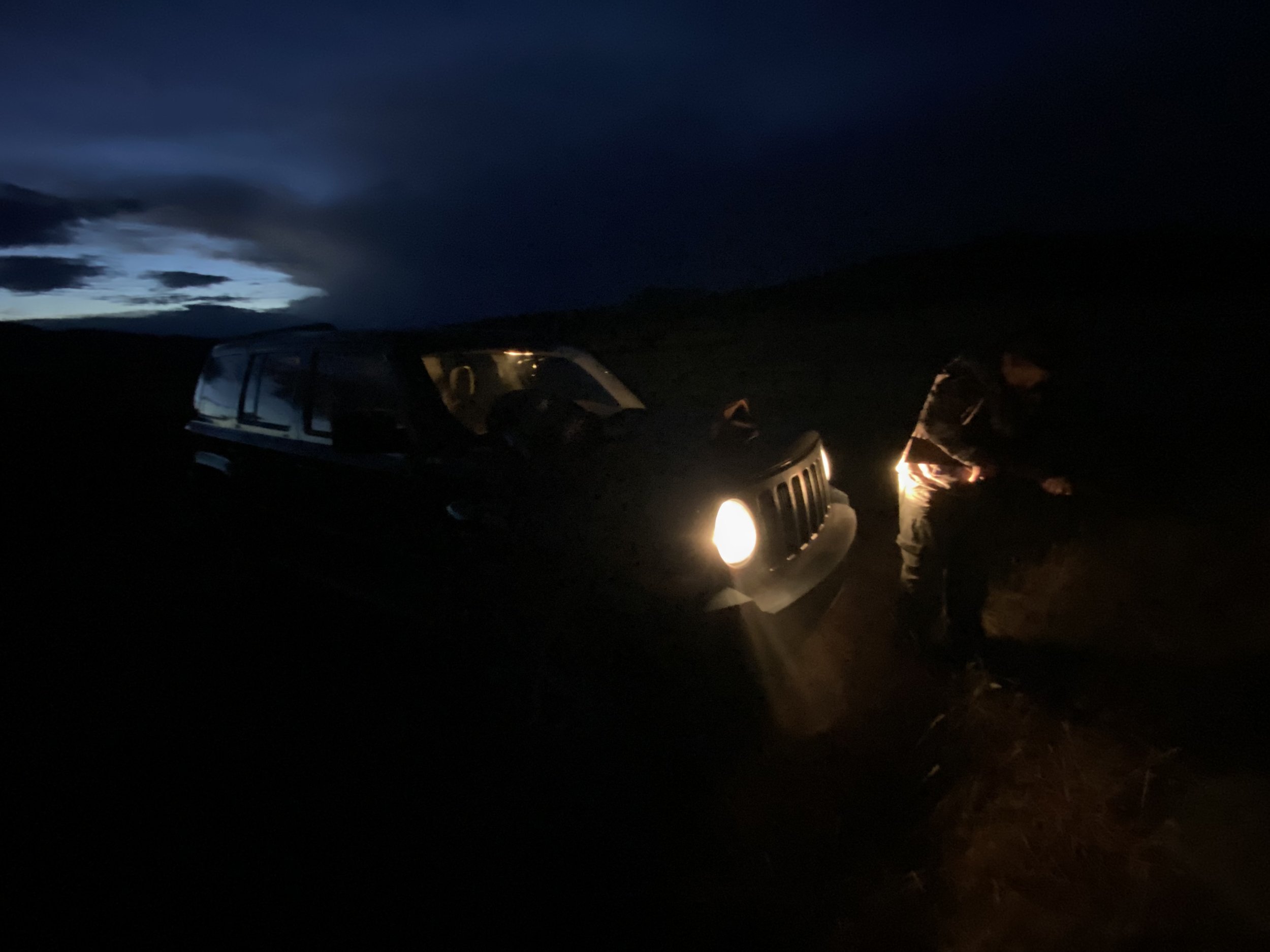Bear Hunt Day Two
After hiking a dozen miles the day before, Sarah and I crawled out of bed Tuesday morning at 4am and started walking into the mountains under a sky as dark as a shebear’s summer coat.
We walked to the east side of the unit, bounded by the Chama River. Low clouds hung over hills, and we sat under ponderosa pines, scanning the clearings.
The elk were active, moving in and out of cover. But no bears stepped into view so we headed to a nearby watering hole to look for tracks in the mud.
Bear prints
On a hill near the watering hole, the soil felt different, loamy and dark. I noticed light-gray rocks spilling out of the hillside.
The stones looked beveled like spear points, blades shaped by human hands for cutting or stabbing. I started to see them everywhere and thought I’d found a tool-making site where ancient hunters made weapons.
In hindsight, looking at the photos, the “blades'' look like they flaked naturally from bigger rocks . The consistency of the stone was wrong for knapping.
But often my mistakes point me towards something else.
Minutes later, my eyes still seeking the shapes of lithic tools, I found a projectile point in the dirt at my feet.
Sharply serrated, auriculate, carved from a stone that could hold an edge.
Ancient Projectile Point
It’s the kind of find that reshapes your brain, something that links hunters past and present. Even now, weeks later, my vision is still seeking that pattern, looking for stone points shaped by human hands, eyes on the ground.
By midday we could see thunderheads building. Moisture flows north from the Gulf of California, up the Rio Grande Rift Valley, fueling monsoons in the mountains most afternoons in the late summer. The storms are unpredictable and dangerous. That day we hiked out in time to watch marble-sized hail fall, collecting in drifts that didn’t melt until the next day
Hail in the afternoon monsoon
Prayers and offerings.
When the storm cleared, we came back to the forest and found the ground studded with pale, hygroscopic earthstars, mushrooms evolved to take advantage of the uneven presence of water.
Hydroscopic Earthstar
Thamnophis elegans ssp. vagrans
Mule deer wandered close to us with awareness but little fear. Approaching quietly, scentless, on foot, following curiosity and wonder allowed us to nearly walk among them.
In a meadow where multiple game trails funneled into a clearing, we found the carcass of a fresh-killed elk calf. It smelled terrible, but the remains didn’t look old. We decided to set up a watch on a hill overlooking the kill site, hoping the smell would draw something in.
Scoping the clearing.
It would have been a far shot, so Sarah set up a shooting rest, a forked limb that she’d set into the ground. The stick had a strange menace to it, imaginary wings upraised and a face like a dragon or serpent. A deathbringer.
We glassed till sunset with binoculars from the top of the hill while not much happened. We headed back in the fading sunset, trying to avoid a bear encounter in the dark.
Mule deer in the gloaming
Sundown, emptying the rifle and packing out.











